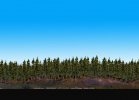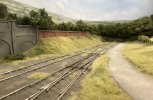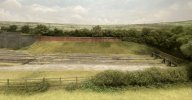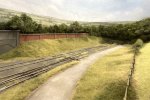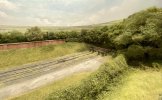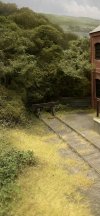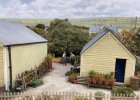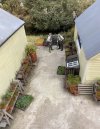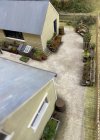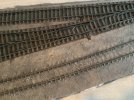Podartist79
Western Thunderer
Thank you.Interesting (and attractive) curvature to the cabinet front!
What scale reduction front-to-back have you used?
I’ve just edited the previous text as a result of your question.
There’s no mathematical rule as such, the reduction has been done by eye.
The buildings are 2mm scale, but as they recede the furthest has been put slightly lower in the scene with foliage added in front to suggest yet more distance.
Behind that building, it’s difficult to allude to what scale the trees and hills are. Essentially less than 2mm scale I guess.
Hope that’s useful.
Neil.

